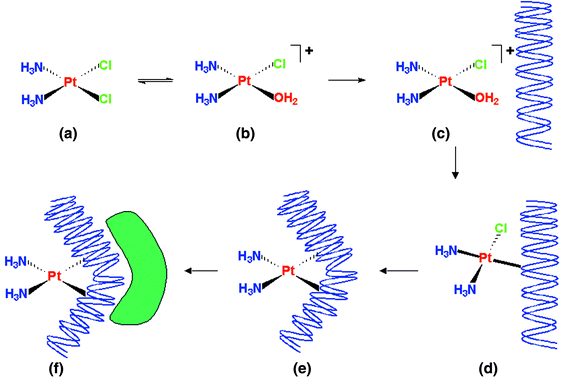Relevant Specification Extracts:
AQA
3.3.13.4 DNA
The structures of the phosphate ion, 2-deoxyribose (a pentose sugar) and the four bases adenine, cytosine, guanine and thymine
A nucleotide is made up from a phosphate ion bonded to 2-deoxyribose which is in turn bonded to one of the four bases adenine, cytosine, guanine and thymine.
A single strand of DNA (deoxyribonucleic acid) is a polymer of nucleotides linked by covalent bonds between the phosphate group of one nucleotide and the 2-deoxyribose of another nucleotide. This results in a sugar-phosphate- sugar-phosphate polymer chain with bases attached to the sugars in the chain.
DNA exists as two complementary strands arranged in the form of a double helix.
Students should be able to explain how hydrogen bonding between base pairs leads to the two complementary strands of DNA.
DNA (DeoxyriboNucleic Acid)
In this fourth post on condensation polymers, I’m looking at the structure and properties of DNA and the formation of the polymer chain from the phosphate sugar and nucleotide. I’m alos going to describe the nature of the intermolecular forces that exist between these polymer molecules so as to form the well known double helix.
DNA
As the name suggests DeoxyriboNucleic Acid contains a sugar - that’s deoxyribose, a base (there are four different bases in DNA) and the phosphate ion.
This is the structure of de–oxyribose:
Notice that it is the oxygen on carbon atom number 2 that is missing from deoxyribose.
These are the structures of the four different bases in DNA:
And this is the structure of the phosphate anion PO43—
These three elements then form the basic DNA monomer—a nucleotide:
Nucleotides polymerise at the phosphate—sugar group to form the DNA polymer:
We finish with alternate sugar—phosphate—sugar—phosphate linked by covalent bonds:
This is then one strand of DNA. The single strand can then conform in a double helix with another single strand of DNA to give the double stranded helix. The link between the two strands occurs between bases (base pairs) via hydrogen bonds.
This is double stranded DNA:
The base pairs are:
The two strands of DNA are called complementary strands.
The two strands run anti–parallel to each other.
Some anti–cancer drugs (e.g cis–platin) it is thought act in such a way as to interupt the formation of the double helix or to stop the two complementary strands from separating in the replication process that is part of protein formation.
To quote the AQA specification:
“Cisplatin prevents DNA replication in cancer cells by a ligand replacement reaction with DNA in which a bond is formed between platinum and a nitrogen atom on guanine.”
This effect is illustrated in the diagram below:
Here the platinum atom complexes with the guanine at two points on the DNA and bends the chain so that the resultant conformation does not as easily facilitate replication.
But as can be seen below the platinum can complex with guanine in other places so as to disrupt the DNA chain.





















No comments:
Post a Comment